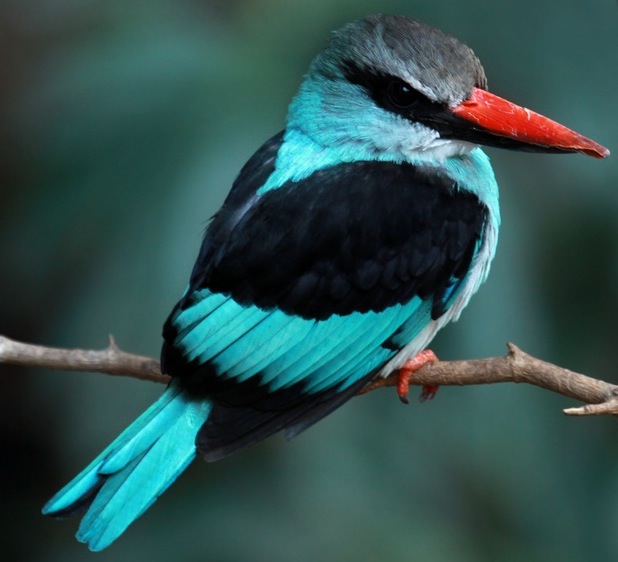Kingfishers

This group of birds do have specialist requirements, but compared with our native kingfisher (Alcedo atthis), keeping them successfully in aviary surroundings is not as difficult as may be thought. Those from the New World and Asia are largely unknown in aviculture here in the UK however, where African species and the Australian kookaburra (Dacelo novaeguineae) are most likely to be encountered.
Housing
In spite of their popular image as birds of waterways, those kingfishers kept in aviculture tend to be birds of forested surroundings, or, in the case of the exceedingly noisy kookaburra, open country often far from water. Kingfishers can therefore be housed in fairly standard aviaries. The majority will need winter-time heating however, while for breeding purposes, a bank of some type will need to be incorporated into the aviary.
Feeding preferences
Fish naturally features only to a very limited extent in the diet of most kingfishers kept in aviculture. Invertebrates are much more significant, while large species are as kookaburras are more carnivorous. They will hunt small mammals and reptiles in the wild. A difficulty can be to persuade African species in particular to take a balanced diet, so the use of supplements on livefoods is recommended.
In the case of mealworms and crickets, gut-loading is useful. This technique entails feeding the invertebrates on a food rich in key nutritional ingredients, which in turn will pass into the kingfisher’s digestive tract, from where it can be absorbed into the body. Soaked mynah pellets are more likely to be consumed by these birds than loose softbill food. Dried shrimps, as sold by specialist bird food suppliers, and fish such as whitebait in moderation can also be offered.
Breeding
The majority will excavate holes, being tunnel nesters, and this can create problems in aviary surroundings. If there is an inadequate bank provided, a pair may attempt to burrow into the floor of the aviary, with the risk that the nest site may collapse when it rains. The best solution is to construct an artificial tunnel, using piping of a suitable diameter, buried horizontally in a bank, linking directly to a concealed nestbox at the rear. This can also allow you to inspect the nest chamber easily from above.
Sociability
The predatory nature of most kingfishers kept in aviculture means they should be accommodated on their own.
Health watch
Nutritional problems, linked to an inadequate diet, while tapeworms can be a problem, especially in imported birds, which will have acquired these parasites from their prey.
Good to start with: Grey-headed kingfisher (Halcyon leucocephala) is one of the species which has been bred in aviculture, in spite of the fact that pairs cannot be distinguished visually.
Clutch size: 3-5 eggs.
Incubation and fledging periods: About 18 days in both cases.
Enthusiast’s guide
Kingfishers, Bee-eaters and Rollers by C. Hilary Fry, Kathie Fry and Alan Harris. Published by Christopher Helm.